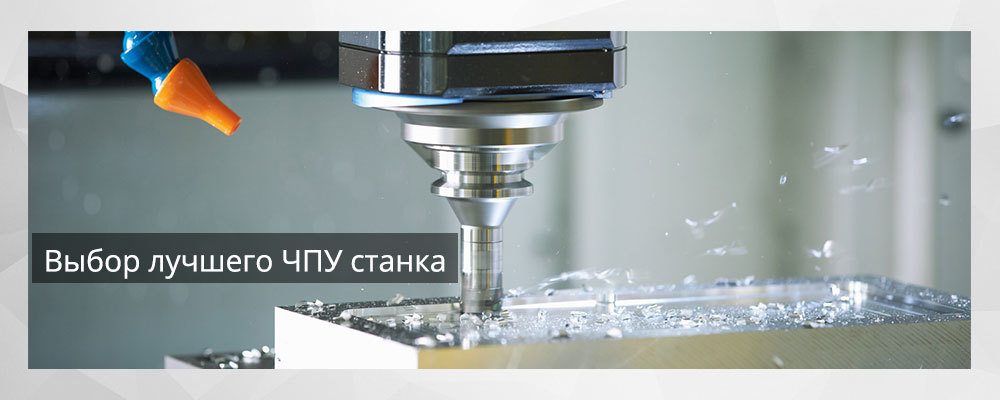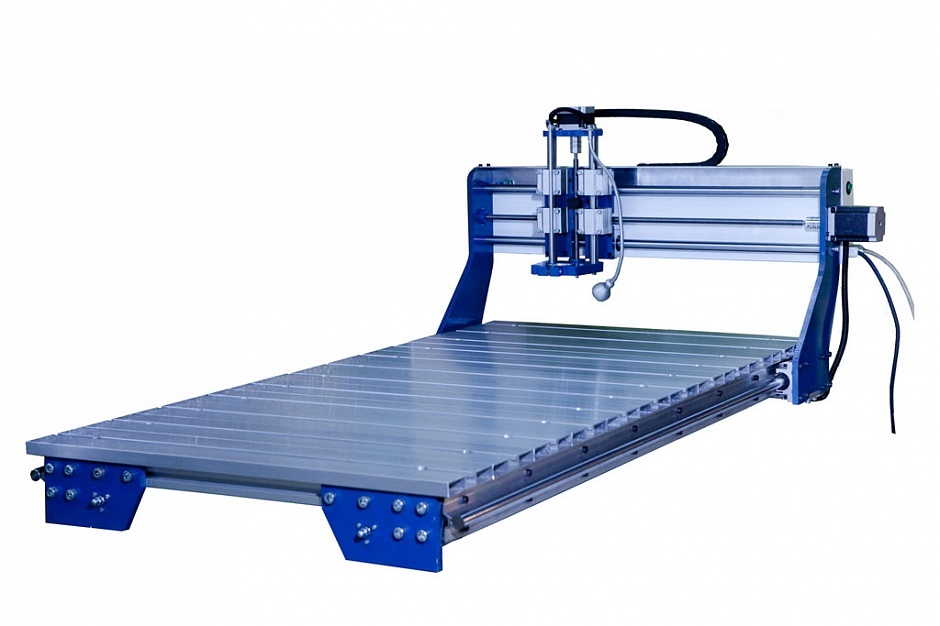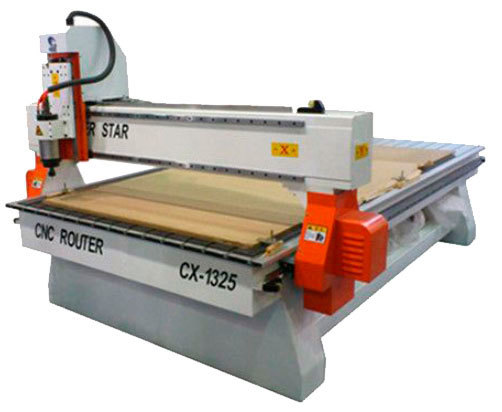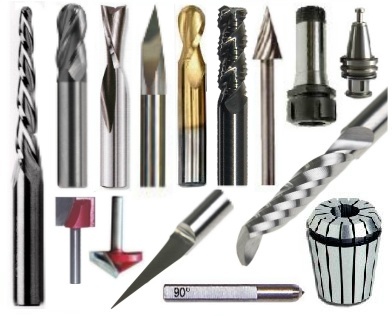CNC Machine Selection Guide

If you are just opening a business and have no experience in this area, the choice of CNC milling machine can put you at a dead end - there is so much variety in the industrial tool market.
Only many years of experience and specific knowledge allow specialists to select CNC machines in accordance with the requirements for equipment.
Many simply get lost in this abundance, and it is not surprising - it is difficult even for professionals to choose the best CNC machine if they do not follow the novelties of the tool market, whose range is constantly expanding and improving.
')

By what criteria is it better to choose a CNC machine?
It depends on what it will be used for. From materials, work profile, required speed and accuracy, from the required resource. Many significant characteristics of such machines directly depend on their equipment - on the properties of their components and consumables, on design features. Consider the most basic.
Spindle
The spindle is one of the main parts of the milling machine. It depends on the spindle, which mills can be used with this particular machine, at what angles they can be fixed and how it is used. The spindle drive is usually mounted - that is, the spindle is a powerful compact electric motor with a collet for clamping the cutter.

Much directly depends on the quality of the spindle - a good spindle will last for a long time, constantly delighting you with the quality of work, while a bad one can ruin not only the product, but also damage the machine itself in case of an accident, or even injure personnel. The choice of spindle should be approached responsibly, always sensitively listening to the recommendations of the machine manufacturer and paying attention primarily to the products of well-known and reputable component manufacturers.
Milling area
This is one of the most important characteristics of the CNC machine - the size of the milling area determines the size of the product that the machine can process. For each narrow field of application, there are different size requirements; more versatile machines have an adjustable milling area, or those that obviously exceed the requirements for most commonly used cases.

The device of the site is also important - it should not be difficult to secure and precisely position the workpiece, otherwise serious damage is possible. When choosing a CNC milling machine for work, it is necessary to decide in advance on the dimensions of the parts to be machined so as not to be confused.
Purpose of the machine
CNC machines are divided primarily on the material that is designed to handle, as well as on the scope.
Metalworking equipment
CNC metalworking machines are distinguished from others primarily by the strength and power of the design, which allow them to work with both metal and most other materials.

To reduce wear and avoid jamming of the cutter, they are often equipped with coolant supply to the cutter, usually water or oil, directly to the area of working contact, and many of them are equipped with a powerful air suction - structurally provided for fastening the socket of an industrial vacuum cleaner to automatically remove chips from the treated surface.
Woodworking equipment
CNC machines for working with wood, as well as composites and plastic, structurally differ little from machines for working on metal, but have a slightly simpler design and lower power requirements and strength characteristics, which is naturally due to the specifics of the material.

The cooling of the cutter in them occurs air, and more often it is completely absent, since its presence is not critical. Chip removal is also not usually provided for and is carried out manually by the operator. Accordingly, the cost of such machines is usually somewhat lower, and their maintenance is simpler and cheaper, and the prevalence is more.
Equipment for the manufacture of furniture
CNC machines designed for the production of cabinet furniture have their own characteristics - in particular, the dimensions of the milling area in them exceed those of other CNC milling machines, as parts for processing can differ in larger area, compared with other CNC applications.

Accordingly, the furniture CNC machine will have large dimensions in all dimensions, as well as greater complexity and cost of the frame and guides than a similar machine for working with smaller objects. For the rest, they differ little from machines for processing wood, plastic and composite materials.
Glass Processing Machines
Glass-processing CNC milling machines are different from metal processing machines mainly because they use special cutters with carbide, diamond and corundum working surfaces.
Cutters can be either with a special coating or solid-coated - such components are created by baking diamond grit at high temperatures and high pressure, which gives an unusually strong and durable tool.
Also, in glass processing machines, the supply of working fluid to the area of contact of the cutter with the material is obligatory - this is due not only to the need to cool the cutter when working with such a hard material as glass, but also to immediately eliminate the spent material fragments so that they do not interfere with further work they didn’t spoil the part getting into the place of contact of the cutter with the workpiece, on the one hand, and so that they would not get into the air that the machine operator breathes. licarbonate, plexiglas of different composition and other solid materials, as well as metal blanks.

You can select a CNC machine for working on glass based on its compliance with these mandatory criteria.
Stone processing equipment
CNC milling machines for stone work are designed to engrave and perform complex volumetric bas-reliefs on such hard materials as natural stone of various rocks - granite, marble, sandstone, as well as on artificial stone slabs of granite chips with polymer.
The specifics of the stone work involves both large areas of processing, and high material hardness, and increased weight of the workpieces. Also, the stone is characterized by the fact that, when working with it, there is a need at the same time and in constant circulation of water in the working area, and in removing crumbs and dust with a vacuum cleaner - water itself does not save coarse fraction characteristic of mineral materials from dust.
Such machines can easily cope with other materials - from wood and PVC, to, often, even glass and metal, and therefore will be useful not only to manufacturers of stone products, but also to those whose professional interests are much broader.

This is the most perfect, perhaps, software-controlled milling equipment, which can do almost everything in this area of production, however, it is unnecessarily powerful, cumbersome and expensive for the majority of work not directly related to its purpose.
No matter how great the temptation is to get a truly universal CNC milling machine, if you don’t have stone processing among your tasks, consider purchasing something more specialized from the above.
This is perhaps the most basic points about which you need to be aware of when choosing a milling CNC machine. And even if at first it seems that if you need to buy a milling CNC, the choice is not easy, everything is not so bad. Now we will focus on the features of CNC milling machines.
Types of kinematic machine models
In preparation for work on a milling CNC machine, kinematic models of the machine are used, which are software simulations of this equipment and are necessary for correct preparation and predictability of machine actions during program execution.
The kinematic model of the machine necessarily carries information about the work area, its dimensions and location relative to the stationary base of the machine, the location and possible trajectories of the working head - cutter holder, and other physical parameters of the equipment - distances, dimensions - all that have direct attitude to the work performed by the machine.
Examples of machines and their models:

Management Program Preparation
To work on CNC milling machines, CAD / CAM systems are used - software packages designed to transfer data from drawings and models to the form of commands that the machine can understand.

These are DeskProto , VCarve Pro , ConstruCAM-3D , ArtCAM , NX CAM , SprutCAM and Mach3 software products .
The entered data on the size and shape of the parts become control paths in them, which, in turn, turn into control programs in the process of post-processing.
Postprocessor
A postprocessor is a special software product that turns data on the parameters of a part into an individual program that controls the movements of the tool and / or workpiece for each specific machine.

Here you can read more about the development of kinematic models, for example, industrial systems from Siemens .
Also useful information can be found in the library of technical literature .
Detailed information on working with each specific machine can be obtained on the official website of its manufacturer. This is the most reliable option that will save you from many mistakes.
Control
In some cases, when you have to work on a serious industrial machine, you can set the program for processing some more or less simple details manually, through the machine control panel. In this case, you should strictly follow the instructions of the manufacturer and consistently perform all necessary steps.
The control panel of one of the CNC milling machines:

When creating elements of a more complex form, it is impossible to do without using a computer, and many compact machines are completely controlled only through a connected PC.

Multi-axis processing
CNC milling can be divided into vertical and horizontal - according to the location of the working head, respectively - top or side, and also divided by the number of machining axes - into three-coordinate, four and five-coordinate.

Accordingly, the more the coordinate axes of the tool movement, the more efficiently and with greater complexity can the part be machined.

Used cutters
Depending on the specifics of the work - on the material, the necessary forms of processing and other factors, a large number of various milling cutters are used in CNC milling machines. Cutters are single-entry, two-entry, spherical, V-shaped, conical spherical, pyramidal radius with one or two cutting edges, engraving, cutting, etc.
Spherical and pyramidal cutters are used for deep selection of material from the part, processing of corners, creating recesses of the corresponding form. Cutting and engraving mills of different shapes are used for engraving, cutting parts, processing the edges of the product, and for shaping - creating a bas-relief image. Radius and fillet mills, both convex and concave, are used for machining corners, edges of worktops and other parts, chamfering, etc. Face mills allow you to create holes, as opposed to verified - any shape.
Examples of cutters used:

A variety of mills varies from the simplest, similar to an ordinary drill or a drill, and to very complex, from different materials and every possible form, with various quantity of the cutting sides. This provides a wide range of tasks they solve.

For each material and type of work, an individual selection of cutters is needed, which our specialist will help you choose.
Software-controlled milling machines are an excellent tool, with proper use, capable of creating a very wide range of products, from advertising structures to parts of other machines, from kitchen cutting boards to parts of jet aircraft engines. The area of their application is almost unlimited, and the range and degree of availability increase every day.
Now not only a machine-building plant can afford such equipment, but also a relatively small workshop, which is good news.
Want more interesting news from the world of 3D technology?
Subscribe to us in the social. networks:




Source: https://habr.com/ru/post/397221/
All Articles